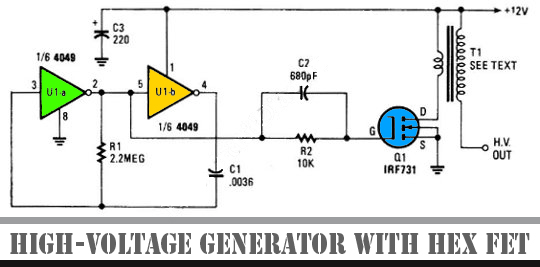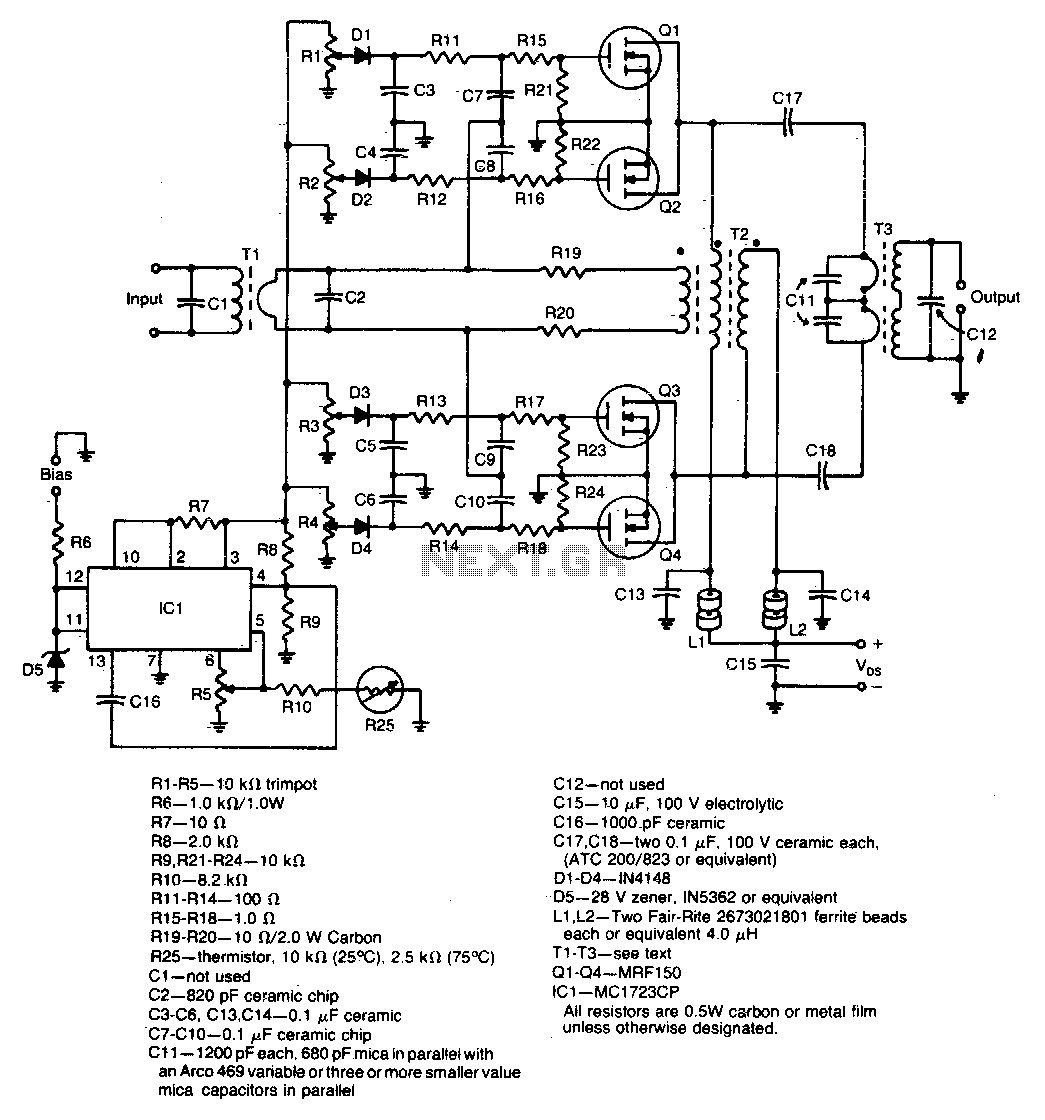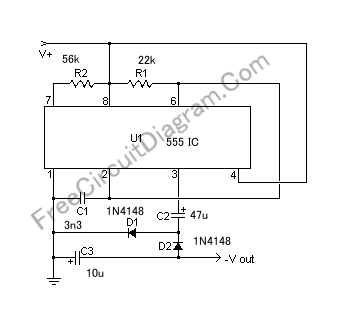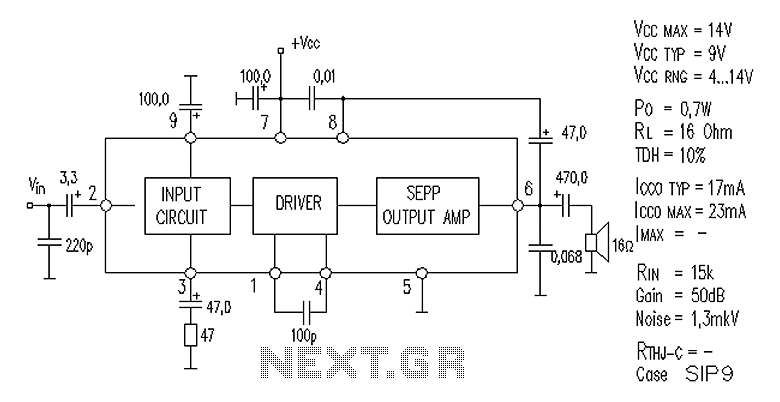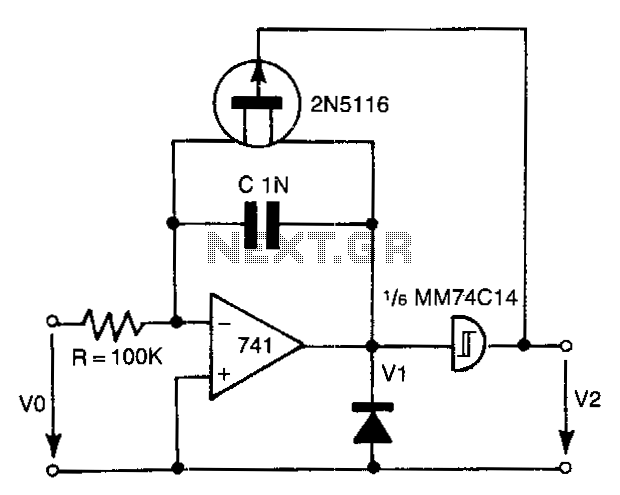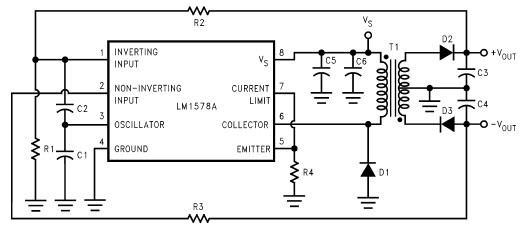
8V DC Power Supply With Over Voltage Protection
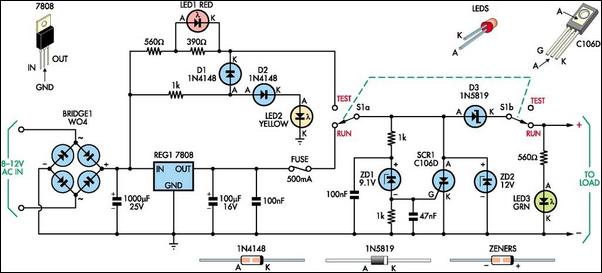
This 8V DC power supply is designed for use with high-end electronic equipment. It includes full over-voltage protection to safeguard against regulator failure, whether in the supply itself or in the connected device. The circuit employs a standard full-wave rectifier, followed by a three-terminal voltage regulator (REG1) with suitable filtering. When power is applied and switch S1 is in the "Run" position, the output of REG1 is directed to the load through a 500mA fuse and Schottky diode D3. This configuration also activates LED2 (yellow) and LED3 (green), which indicate the presence of unregulated and regulated voltages, respectively. Diode D3 protects the circuit from external voltage sources, such as charged capacitors. A "crowbar" circuit consisting of ZD1 and SCR1 provides over-voltage protection. If a fault occurs (for example, a short circuit in REG1) that causes the output voltage to exceed 9.1V, ZD1 activates and sends a voltage to the gate of SCR1. If the voltage continues to rise, SCR1 will turn on (around 10V) and blow the fuse. Zener diode ZD2 offers additional emergency over-voltage protection in case the "crowbar" circuit fails. Switch S1 allows the operator to test the "crowbar" function. When S1 is in the "Test" position, the load is disconnected by S1b, and the unregulated supply voltage is applied to the "crowbar" circuit via S1a, triggering it. During this process, LEDs 2 and 3 (green and yellow) turn off, and LED1 (red) illuminates to indicate that the SCR has triggered. The SCR will turn off again when S1 is returned to the "Run" position.
The 8V DC power supply circuit is designed with several critical components to ensure reliable operation and protection for sensitive electronic equipment. The full-wave rectifier converts the incoming AC voltage into a pulsating DC voltage, which is then smoothed by filtering capacitors to reduce ripple. The three-terminal voltage regulator (REG1) stabilizes the output voltage at 8V, providing a consistent power supply to the load.
The use of a Schottky diode (D3) is significant due to its low forward voltage drop, which minimizes power loss and enhances efficiency. The 500mA fuse serves as a primary protection mechanism, preventing excessive current from damaging the circuit components.
The inclusion of LED indicators (LED2 and LED3) provides visual feedback to the user regarding the operational status of the power supply. Yellow LED2 signifies that unregulated voltage is present, while green LED3 confirms that the voltage has been regulated to the desired level.
The "crowbar" protection mechanism is an essential safety feature. Zener diode ZD1 is calibrated to activate at a predetermined over-voltage threshold. When triggered, it conducts and applies a gate voltage to SCR1, which acts as a switch to short the output and blow the fuse, thereby disconnecting the load and preventing damage from excessive voltage.
In addition, ZD2 serves as a backup protection measure, ensuring that even if the primary crowbar circuit fails, the system remains safeguarded against over-voltage conditions.
The test function provided by switch S1 is crucial for maintenance and troubleshooting. By allowing the operator to simulate an over-voltage condition, the functionality of the crowbar circuit can be verified without risking damage to the connected load. The visual indication through LED1 when the SCR is triggered further aids in diagnostics.
Overall, this power supply circuit combines effective voltage regulation and robust protection mechanisms, making it suitable for high-performance electronic applications.This 8V DC power supply was designed for use with an expensive piece of electronic equipment. It features full over-voltage protection as a precaution against regulator failure, either in the supply itself or inside the equipment it is powering. The circuit uses a conventional full-wave rectifier, followed by a 3-terminal voltage regulator (REG1)
with appropriate filtering. When power is applied and switch S1 is in the "Run" position, REG1s output is fed to the load via a 500mA fuse and Schottky diode D3. This also lights LED2 (yellow) and LED3 (green), which respectively indicate the presence of the unregulated and regulated voltages.
D3 is there to protect the circuit against external voltage sources (eg, charged capacitors). A "crowbar" circuit comprising ZD1 and SCR1 provides the over-voltage protection. It works like this: if a fault develops (eg, REG1 short circuit) which causes the output voltage to rise above 9. 1V, ZD1 turns on and applies a voltage to the gate of SCR1. If the voltage then continues to rise, SCR1 turns on (at about 10V) and "blows" the fuse. Zener diode ZD2 provides emergency over-voltage protection in case the "crowbar" circuit develops a fault.
Switch S1 is provided so the operator can occasionally test the "crowbar" function. When S1 is switched to the "Test" posi tion, the load is disconnected by S1b and the unregulated supply voltage is applied by S1a to the "crowbar" circuit, thus causing it to trigger. When this happenS, LEDs 2 & 3 (green and yellow) extinguish and LED1 (red) lights to indicate that the SCR has triggered.
The SCR turns off again when S1 is switched back to the "Run" position. 🔗 External reference
The 8V DC power supply circuit is designed with several critical components to ensure reliable operation and protection for sensitive electronic equipment. The full-wave rectifier converts the incoming AC voltage into a pulsating DC voltage, which is then smoothed by filtering capacitors to reduce ripple. The three-terminal voltage regulator (REG1) stabilizes the output voltage at 8V, providing a consistent power supply to the load.
The use of a Schottky diode (D3) is significant due to its low forward voltage drop, which minimizes power loss and enhances efficiency. The 500mA fuse serves as a primary protection mechanism, preventing excessive current from damaging the circuit components.
The inclusion of LED indicators (LED2 and LED3) provides visual feedback to the user regarding the operational status of the power supply. Yellow LED2 signifies that unregulated voltage is present, while green LED3 confirms that the voltage has been regulated to the desired level.
The "crowbar" protection mechanism is an essential safety feature. Zener diode ZD1 is calibrated to activate at a predetermined over-voltage threshold. When triggered, it conducts and applies a gate voltage to SCR1, which acts as a switch to short the output and blow the fuse, thereby disconnecting the load and preventing damage from excessive voltage.
In addition, ZD2 serves as a backup protection measure, ensuring that even if the primary crowbar circuit fails, the system remains safeguarded against over-voltage conditions.
The test function provided by switch S1 is crucial for maintenance and troubleshooting. By allowing the operator to simulate an over-voltage condition, the functionality of the crowbar circuit can be verified without risking damage to the connected load. The visual indication through LED1 when the SCR is triggered further aids in diagnostics.
Overall, this power supply circuit combines effective voltage regulation and robust protection mechanisms, making it suitable for high-performance electronic applications.This 8V DC power supply was designed for use with an expensive piece of electronic equipment. It features full over-voltage protection as a precaution against regulator failure, either in the supply itself or inside the equipment it is powering. The circuit uses a conventional full-wave rectifier, followed by a 3-terminal voltage regulator (REG1)
with appropriate filtering. When power is applied and switch S1 is in the "Run" position, REG1s output is fed to the load via a 500mA fuse and Schottky diode D3. This also lights LED2 (yellow) and LED3 (green), which respectively indicate the presence of the unregulated and regulated voltages.
D3 is there to protect the circuit against external voltage sources (eg, charged capacitors). A "crowbar" circuit comprising ZD1 and SCR1 provides the over-voltage protection. It works like this: if a fault develops (eg, REG1 short circuit) which causes the output voltage to rise above 9. 1V, ZD1 turns on and applies a voltage to the gate of SCR1. If the voltage then continues to rise, SCR1 turns on (at about 10V) and "blows" the fuse. Zener diode ZD2 provides emergency over-voltage protection in case the "crowbar" circuit develops a fault.
Switch S1 is provided so the operator can occasionally test the "crowbar" function. When S1 is switched to the "Test" posi tion, the load is disconnected by S1b and the unregulated supply voltage is applied by S1a to the "crowbar" circuit, thus causing it to trigger. When this happenS, LEDs 2 & 3 (green and yellow) extinguish and LED1 (red) lights to indicate that the SCR has triggered.
The SCR turns off again when S1 is switched back to the "Run" position. 🔗 External reference
